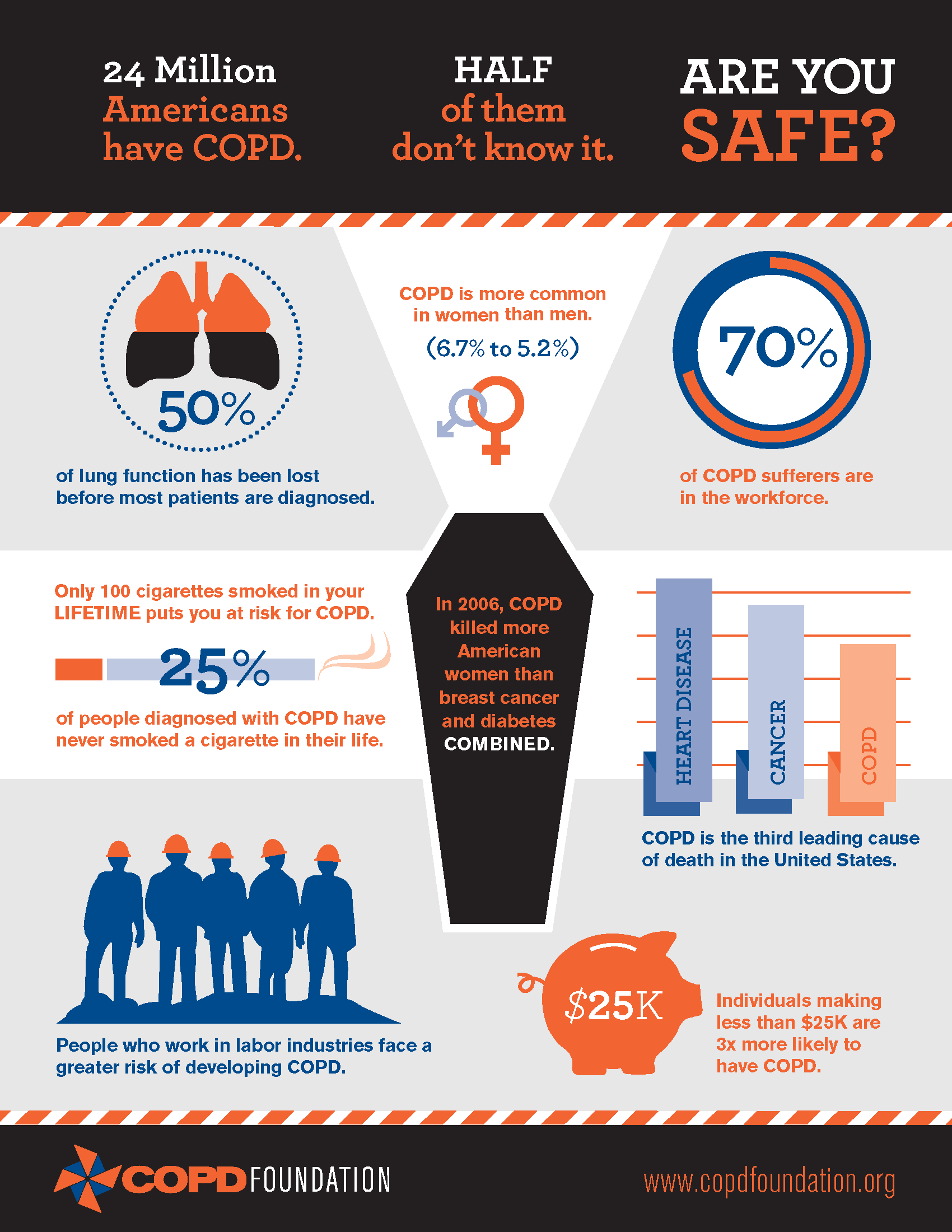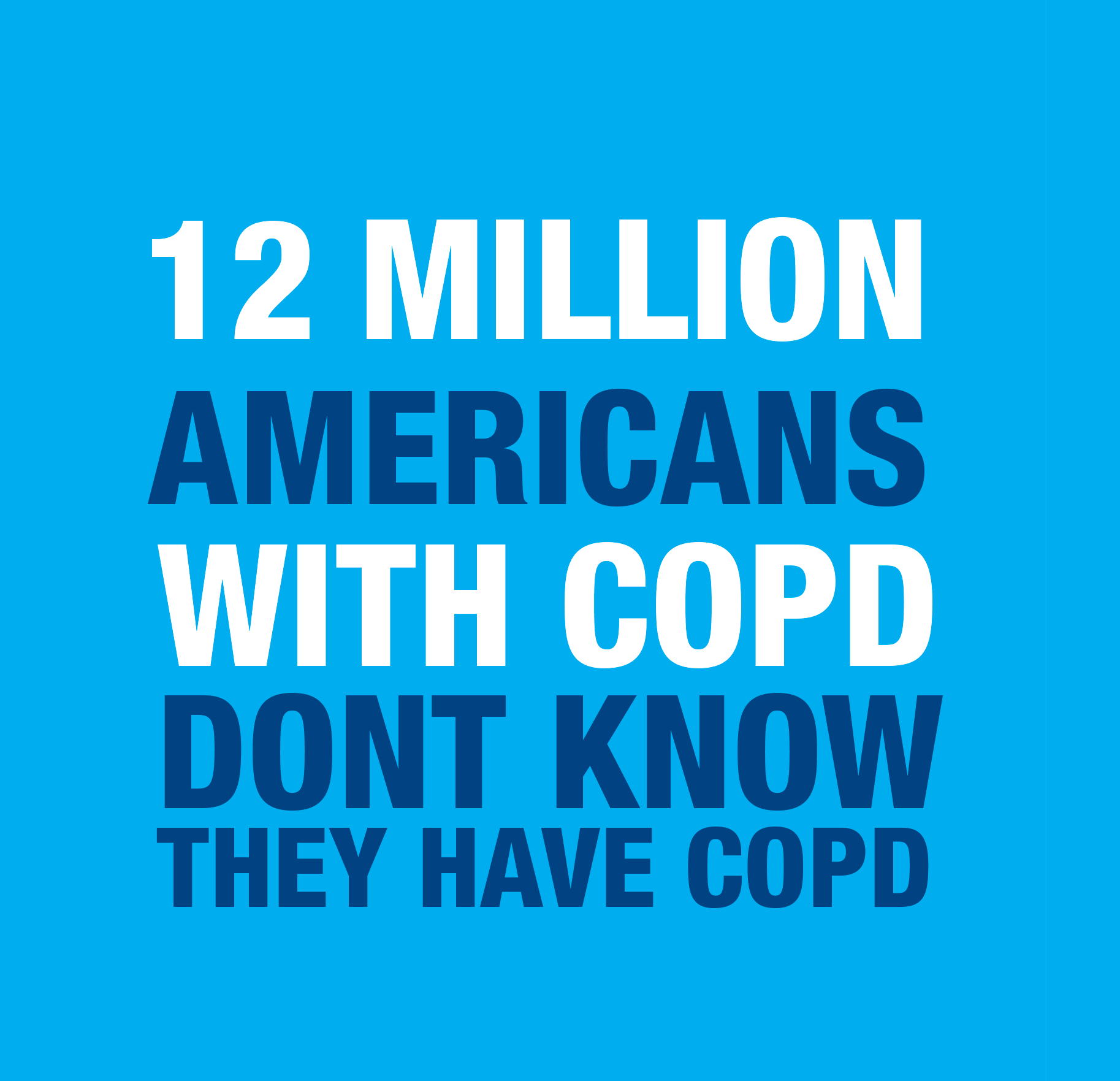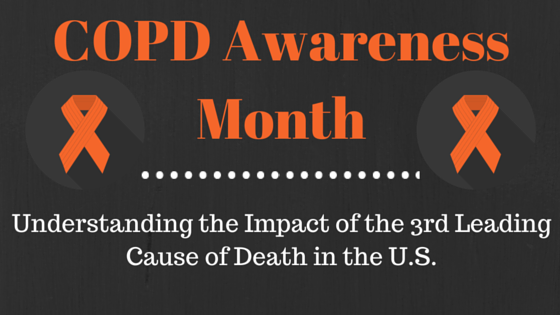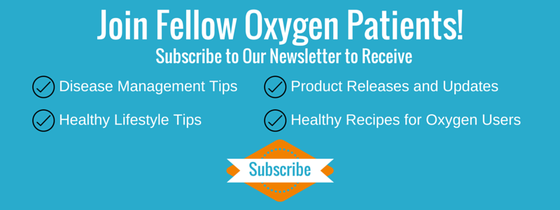So you know exactly what to look for to see if your symptoms signal the need to get tested for COPD and how to treat it if you’re diagnosed.
COPD Awareness Month 2015
Staggering COPD Statistics:
- 6.3% of the US Population have COPD

- Every 4 Minutes Someone Dies of COPD
- Of the 24 Million Americans with COPD, 12 Million are Unware they have COPD
- Every Year COPD is Responsible for 700,000 US Hospitalizations
- 1 Out of Every 11 Patients Hospitalized with COPD is Readmitted within 30 Days
- 21% of Patients are Readmitted to the Hospital
- COPD leads to 1.5 Million Emergency Room Visits per Year (945,000 Women vs. 543,000 Men)
- Only 100 Cigarettes Smoked in Your Lifetime Puts You at Risk for COPD
- 25% of Patients Diagnosed with COPD have Never Smoked
- COPD is more Common in Women than Men (6.7% vs. 5.2%)
- 70% of COPD Suffers are Currently Working
- In 2006 COPD Took more Lives of American Women than Breast Cancer and Diabetes COMBINED
- Women Who Smoke are 13x more Likely to Die from COPD
- Women are Twice as Likely to be Diagnosed with Chronic Bronchitis than Men
Source: COPDFoundation.org
Actionable COPD Resources:
- American Lung Association
- American Thoracic Society
- COPD Foundation
- National Heart Lung and Blood Institute
- National Jewish Health
- Cleveland Clinic
- MyCOPDTeam (Social Network for COPD Patients)
- COPD Connect
- COPD-International (COPD Forum)
- COPD Online (COPD Forum)
Factors that Put You at Risk for COPD:
- Smoking Tobacco
- Second-Hand Smoke
- Occupational Dust and Chemicals
- Air Pollution
- Genetic Factors
Assessing the Symptoms
The most common symptoms associated with chronic obstructive pulmonary disease include breathlessness, wheezing, and chronic coughing. To someone without previous knowledge of COPD these symptoms would mistakenly be attributed to the natural occurrence of aging. If symptoms continue to be left untreated they will further progress and worsen with the disease. Which is why most patients are diagnosed later on in life when the disease is at its worse and impacts their day to day life.
Other symptoms include:
- Excess Mucus Production (Clear, White, Yellow, or Greenish)
- Fatigue
- Loss of Appetite
- Chest Tightness
- Frequent Respiratory Infections
- Blueness of the Lips or Fingernails (Cyanosis)
What is a COPD Exacerbation?
A COPD exacerbation, also known as a flare-up, is the sudden worsening of COPD symptoms such as breathlessness, coughing, and quantity and color of phlegm to name a few. These increased symptoms typically last for a couple of days. A flare-up is caused by a respiratory infection, failing to follow your drug therapy program, or exposure to allergens, toxins or air pollution. This sudden worsening of symptoms may lead to the airways in the lungs rupturing, which may possibly cause pneumothorax.
Testing Measures for COPD
If you have noticed an influx of the common symptoms discussed above, you shouldn’t brush it off and think it’s natural to old age. Instead you should make an appointment with your doctor as soon as you can and let them know the symptoms you have been experiencing and want to be tested for COPD.
A few of the most common testing measures include:
- Pulmonary Function Test (Spirometry) – This is the most common testing measure. During the test your doctor will have you blow into a large tube that is connected to a spirometer. The spirometer will measure how much air your lungs can hold and how quickly you can exhale air out of your lungs.
- Chest X-Ray – This test will give your doctor an inside look into your chest and is helpful in showing emphysema and in evaluating shortness of breath. A chest x-ray is also beneficial for ruling out other lung conditions and even heart failure. COPD cannot be diagnosed solely with this test.
- CT Scan – A CT scan or CAT scan takes a high resolution picture of your lungs. This is a more high-tech version of a chest x-ray. Which is often the most effective testing measure for diagnosing emphysema and bronchiectasis, while also detecting chronic infection, lung fibrosis, and lung cancer. A CT scan is used to measure the amount of lung tissue and to determine if you would benefit from surgical treatment or not.
- Arterial Blood Gas Analysis – A blood test that measures how efficient your lungs are at bringing oxygen into your blood and removing carbon dioxide.
- Pulse Oximetry – A small device that is slipped onto the tip of your finger to estimate the percent of oxygen in your blood (SpO2). Though not as effective at getting oxygen saturation as an arterial blood gas analysis, it is a quick and easy method to see oxygen levels. It is highly recommended that you have a pulse oximeter on hand at all times.
Available Treatment Options
Currently there is no end all cure for COPD, however that doesn’t mean there isn’t hope. There are numerous treatment options available that your doctor may prescribe. Such as:
- Quitting Smoking – Smoking is the leading cause of COPD and numerous other health conditions, it’s vital to your treatment that you quit immediately. If you are having a difficult time quitting alone, or failed numerous times, speak with your doctor about possible smoking cessation programs.
- Oxygen Therapy – This will consist of oxygen tanks, portable and home oxygen concentrators, and liquid oxygen. Medical grade oxygen devices will supplement your body with the oxygen it’s lacking.
- Pulmonary Rehabilitation – A program that is highly recommended for all COPD patients. Here you will have a team of specialist to help you manage all aspects of your COPD treatment. Things you will learn in pulmonary rehab include proper diet and exercise, breathing exercises, COPD education, disease management tips, symptom reducing tips, and treatment options. You will also be around patients that know exactly what you are going through, allowing you to share tips and even meet a few new friends in the process. Ask your doctor about pulmonary rehab programs near you.
- Bronchodilators – An inhaled medication that is typically in the form of an inhaler and is used to relax the muscles around your airways. Which can help relieve coughing and shortness of breath, making breathing easier.
- Inhaled (Corticosteroids) Steroids – Inhaled corticosteroids help to prevent exacerbations while also reducing airway inflammation.
- Oral (Corticosteroids) Steroids – These medications are used if you are experiencing moderate or severe acute exacerbations. Short term usage of oral corticosteroids help to prevent further worsening of COPD.
- Theophylline – A beneficial medication that will not only help to improve your breathing but will also prevent exacerbations.
- Antibiotics – COPD patients are often faced with disease worsening bacterial or viral infections which include influenza, acute bronchitis, and pneumonia. Often causing an exacerbation. Antibiotics and anti-viral medications help to treat bacterial and viral infections.
Importance of Diet and Exercise

Every case of chronic obstructive pulmonary disease is different, no matter your stage or diagnosis maintaining a proper diet and exercise regimen is vital to your overall health. In pulmonary rehab you will have a diet and exercise routine designed specifically for you and your health needs.
Eating a proper diet will nourish your body with the most important nutrients that your body is depleted of. The nutrients obtained will help to improve lung function, reduce symptoms, and even increase your overall energy levels.
With a chronic lung disease such as COPD you may think that exercise is counterintuitive, but in fact it’s quite the opposite. Exercising a few times per week can help to improve lung function, overall mood, heart health, circulation, and muscle strength for increased mobility. While also helping you maintain a healthy weight.
Take Action
Now that you are well educated on COPD, it is now time for you to take action! If you or a loved one have recently begun to experience a few or all of the associated symptoms, don’t wait and take the initiative to speak to your doctor about how you’ve been feeling. The sooner you get tested and diagnosed the sooner you can begin treatment. Doing so will improve the overall quality and duration of your life.
To do our part in spreading COPD awareness to the 12 million people undiagnosed with COPD, we are proud to be sponsoring COPD: Highly Illogical – A Special Tribute to Leonard Nimoy. Help make this exceptional educational documentary possible by donating here.
What are some ways you are helping the cause for COPD awareness this November? Let us know in the comments below!
Related Blog Posts:
- COPD Awareness Month: The Risks of COPD
- COPD Awareness Month: The Top 5 Most Common COPD Symptoms
- COPD Awareness Month: Help Get the 13 Million Undiagnosed COPD Patients to the Doctor





